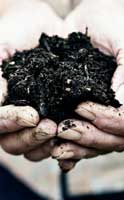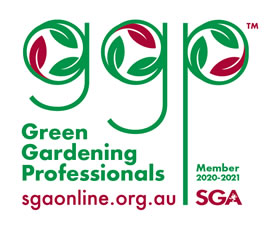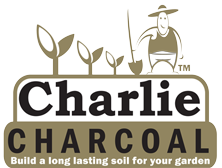| item(s), Total: $0.00 View Cart |
| Shopping cart is empty. |
Planning a New Garden

Where do I start?
Are you interested in growing your own vegetables and herbs, but not sure what do? Hopefully we can give you some tips and inspiration here to get you started on your own Perth organic garden.
If you are nervous, start small! A garden even 1m x 1m is big enough to plant out half a dozen lettuces or a mixture of salad greens (eg. Mizuna, Mibuna, Mustard Greens, Tatsoi, Endive, Rocket) some spring onions, chives, basil and a silverbeet or two! The advantages of starting small (besides cost) are that you can enjoy the growing process with minimal effort, have the satisfaction of eating your own produce, are testing out the environment (site suitability/prevailing conditions, etc) and learning.
Another option worth considering is to start off with a few herbs and vegies in containers. Generally, you are better off planting several plants in a larger pot than using individual, smaller pots for each plant. Larger pots hold moisture longer, and the plants protect each other as they grow. The advantage of using containers is they can be moved around to take advantage of shade, access to a working area, etc.
If you are growing in pots or containers, use a good quality potting mix; the best you can afford. One which contains water retention minerals like Sand RemedyTM or crystals would be my preference. GLSC's premium potting mix is Certified Organic and great for growing herbs & vegies.
Perth has some of the worst agricultural soils in the world – our ancient Perth sandy soils are devoid of nutrients and organic matter, making them water repellent and lifeless. (See our Soil Fertility - the basic essentials fact sheet for more information.)
If you choose to grow in the soil, you need to prepare it well. Use a premium quality soil improver (Our Vegetable Concentrate is designed for this). It should contain a range of nutrients and organic matter, and minerals to aid water retention. Quite frankly, digging in a cheap bag of dirt or sheep poo won’t cut the mustard. It is worth doing the ground work (pardon the pun) to achieve good results. Dig in the soil improver to a depth of 30cm, and work it in with a spade or fork. If it still looks like what you started with, you haven’t used enough. Once you are happy you have something decent to plant into, wet it thoroughly. Plant out your seedlings and water each thoroughly again. Mulch with straw or pea straw – this is essential in the warmer months, but perhaps not so vital over winter. Mulching conserves moisture and ultimately breaks down and further improves soil structure.
All seedlings need daily hand watering over summer. Plants will bolt to seed and taste bitter if they are not getting enough moisture.
If you are have heavy or rocky soils that are hard to dig, have you considered growing in a raised garden bed?
Raised beds can be made from almost anything; timber, bricks, limestone blocks, coffee rock, corrugated sheeting – even hay bales! Look around and see what resources you can recycle. The planting depth should be a minimum of 30cms of good quality soil. This is the root zone where plants access nutrients and moisture.
Another popular option is corrugated iron planters. These come ready assembled, are available in a range of sizes, heights, shapes, and colours. Higher beds are great for those with back or mobility problems, as bending over is not required.
These planters can be used on top of soil, lawn, even concrete or paving. They look great, are long lasting and can be moved around your yard or taken with you if you move house.
You need to carefully plan where to position your garden bed, taking into account things like:
Sun. The angle of the sun changes with the seasons. Photos can be helpful reminders of where shade falls at various times of the year. Vegies enjoy lots of sun in winter, but over summer they need shade and protection. You can grow in different areas for the seasons, or use shadecloth over the hotter months.
Wind. If your yard is susceptible to strong winds, windbreaks may be necessary to prevent burning, stress and erosion. Shadecloth attached to stakes works well.
Frost. If you live in areas where frosts are a problem you need to ensure your plantings are frost tolerant, or you must provide shelter with taller plants or structures. Plants next to ponds and water features (not too tiny!) are protected by the heat retained by water
Root Competition. Don’t underestimate the impact of root competition from surrounding trees and shrubs. Trees quickly find soil with good nutrition and moisture. This can be a major problem in the hills. Tree roots can travel many, many metres underground and under buildings. Again, raised planter beds can be very useful in overcoming this problem. An old piece of carpet lining the bottom of the planter bed helps stop roots infiltrating while still allowing drainage.
Fences and walls. Reflected heat needs to be considered. Growing against a north facing surface in winter provides extra warmth and light, but in summer plants will burn to a crisp.
Water. Can you retic the bed or are you prepared to regularly hand water? Is there easy access to a tap?
Once you have chosen the best site, remember to prepare the beds with good quality soil which contains a mixture of nutrients, organic matter and added minerals for water retention. Nutritious vegies require nutritious soil, and the health and vigour of your plantings depends on it! As Perth's organic gardening specialists, we can help!
You now need to consider whether you will be growing from seed or established seedlings. There are pros and cons of both options.
Growing from seed is cheaper, you can stagger your plantings (a few planted this week, a few more next week), and it is immensely satisfying to grow something well from a tiny seed.
Some vegies are best grown from seed; eg. most root crops (beetroot being an exception). When planting seed the general rule is not to bury it deeper than twice its width. Some seed benefits from pre-treating (eg. soaking); there are some tricks & tips – read the packet and consult a good gardening book!
Most seed needs to be kept moist in order to germinate; with tiny seed like carrot and radish, this can be challenging as they cannot be planted deeply, and the soil surface will dry quickly in warmer weather. A very light spraying several times a day may be an idea.
Germination times will vary, but as a general rule you should see tiny leaves emerging within 1 – 2 weeks. Usually, failure is a result of planting too deep, and incorrect watering. As they grow any plants which have been planted too close together need to be thinned to avoid overcrowding. For more information, see our Growing From Seed fact sheet.
You might have worked out by now that growing from seed is sometimes tricky! If you are frustrated and disheartened by a lack of success, buying and planting out healthy, established seedlings is often a ‘safer’ choice.
Always remember that the weather and planting conditions in your back yard will have a bearing on when to plant and how well things will grow. See our popular free gardening guides here - we've got lots of information for you!
Look for the heritage (also known as open pollinated or heirloom) varieties. This means you can save you own seed to plant next year, and they are not hybrids developed for marketing reasons rather than flavour.
Whether you grow from seed or seedlings, care must be taken to protect plants from pests. Snails, slaters, birds, rabbits, etc. will all love your vegies too! See our fact sheet for some natural pest control recipes.
Remember to have fun! In a short time you can be enjoying your very own healthy, home grown produce.
Get Growing Today!
Come on in!
Pick up bags or bulk product bring your trailer (or use one of ours) Opening hours: 8.30 - 4.00 Monday - Saturday (closed Sunday)
Shop Online - We Deliver
24/7 convenient & secure online shopping or support your local independent retail outlet
Get Growing
We guarantee our products. Ask our friendly staff for help & advice ~ we're here to help you achieve the garden of your dreams.
























